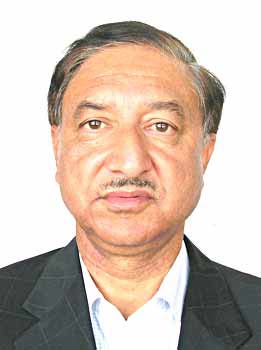Saleem Beg
 Day in and day out, we are being treated to superlatives about the city of Srinagar as Shehri-Khas, historic city, ancient centre of culture, arts and crafts from official and civil society institutions. There has hardly been any attempt to define and elaborate on these appellations in tangible terms. It is high time we take a hard look at what this city mean to its citizens. A designation as one of the ugliest cities of India given to Srinagar some time back looks a bit of flip as in any case there are hardly any good cases or best models in the country. But yes, not very long ago, Srinagar was a friendly city with lot of urban space in terms of pedestrian walk ways, cultural engagements at secular and religious festivals, musical ensembles around marriages, Eid celebrations and Ramzan evenings.
Day in and day out, we are being treated to superlatives about the city of Srinagar as Shehri-Khas, historic city, ancient centre of culture, arts and crafts from official and civil society institutions. There has hardly been any attempt to define and elaborate on these appellations in tangible terms. It is high time we take a hard look at what this city mean to its citizens. A designation as one of the ugliest cities of India given to Srinagar some time back looks a bit of flip as in any case there are hardly any good cases or best models in the country. But yes, not very long ago, Srinagar was a friendly city with lot of urban space in terms of pedestrian walk ways, cultural engagements at secular and religious festivals, musical ensembles around marriages, Eid celebrations and Ramzan evenings.
The reasons for loss of all the cultural depth and essence makes for a serious in-depth study. All historic habitations are rooted in their past. Unfortunately our march to modern times has robbed us of our essence. Besides, the callousness of the citizenry arising out of lack of awareness, the state interventions are also contributing their bit in this process and most of the time lead to vandalisation. The city has now become an urban habitation with attendant systemic and infrastructural civic failures. Central planners have now been voicing concern about absence of components related to livability in the proposals sent for funding to central government. Recently, many cities including Srinagar and in some aspects Jammu were reminded by the National Urban Renewal Mission authorities that their JNURM proposals need to incorporate heritage-based urban planning in their funding proposals. National Institute of Urban Affairs which has been assigned the task of reviewing the JNURM proposals received from various city planning agencies has privately been expressing its frustration with the cities about their lack of understanding of the heritage related issues.
Among many other aspects of urban life, a major causality has been the pedestrian space. Walking on the lanes, roads and sideways of Srinagar used to be a pleasant experience not very long ago. These pedestrian spaces like footpaths, open chowks and roads have been eaten away by encroachers of all sorts. Srinagar is one city where a shop owner thinks he has all the right on the road in front for display, parking or even closing the passage. Whatever little space left has been converted into parking by public and private transport.
The rapid urbanization witnessed in recent times accelerated the pace of change in all aspects of life, particularly in urban environment. A majority of cities and towns are exposed to extraneous and fast-growing agents of change that disturb the delicate balance between the physical, social, cultural and ecological elements of urban settlements. The rapid urbanization has accelerated the pace of change in all aspects. These issues are receiving attention and focus nationally as to how the cities can be relieved and secured for its residents. However there is hardly any thinking or debate with the social as well as state institutions about fast deteriorating condition of Srinagar. It is high time some thought and space is given to restoring the organic character of the city so that while the city grows, it carries along with it the essentials of a livable urban habitation.
The writer is Convener INTACH and former Director General Tourism. Email: [email protected].















